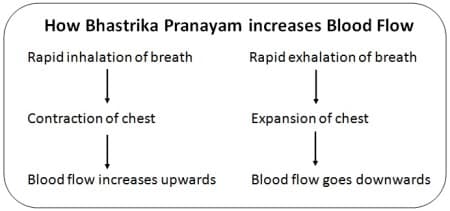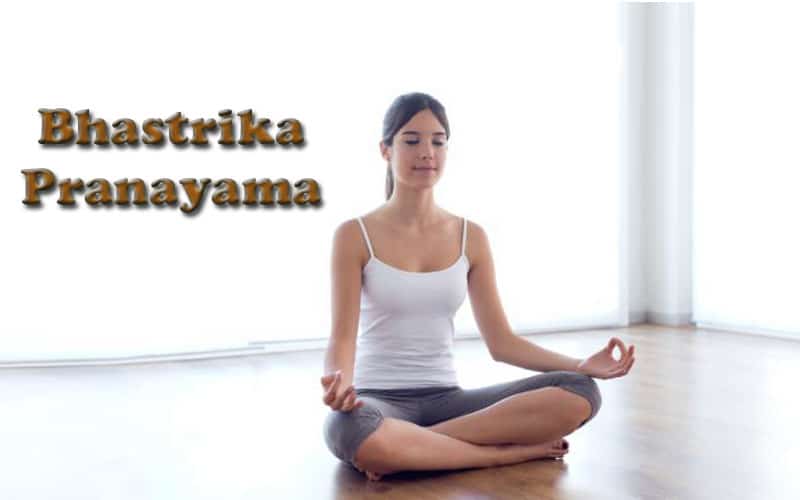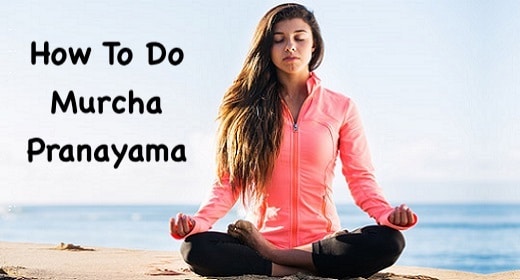What Is Bhastrika Pranayama? Meaning and Definition
Bhastrika Pranayam is a breath technique used in traditional hatha yoga teachings, and is a powerful technique for activating the prana, or life force in the body.
Bhastrika is usually translated as ‘bellows,’ which is an appropriate name for this breath, since it strongly activates the diaphragm and accentuates the movement of your belly as your breath moves in and out of the body. Thus, the movement is akin to using a bellows to push air in and out of your body.
The technique may also be referred to as the breath of fire.
Bhastrika Pranayama Technique
To practice Bhastrika breathing, begin by sitting in a comfortable position with an erect spine. It is important that you are able to maintain a straight back for the duration of the practice.
Then, begin by exhaling sharply, creating a forceful sensation as you expel all of the air from your body. Continue this with a sharp, forceful inhale. Breathe quickly and forcefully, but without rushing. You should complete each cycle of breath in about 1 second. This is the core technique, which should be repeated for approximately 30 cycles of breath.
As you practice bellows breath, you want to make sure that you are activating your diaphragm. You may wish to place your hands over your belly in order to increase your awareness of your lower torso and feel into the movement of your diaphragm as you breathe with the practice. The belly should actively move in and out as you breathe.
According to the traditional hatha technique, Bhastrika is usually performed in three cycles of approximately 30 breaths each. In between each cycle, you pause, taking a full inhale through both nostrils.
Then, place your hand over your face and use your fingers to gently close your right nostril, as you exhale fully through your left nostril. Pause once more, then repeat the cycle, beginning again with your bellows breath.
However, if you are a beginner at this practice, continuing with the breath for 3 cycles of 30 breaths each may be too intense. You may wish to practice the technique using fewer breaths in each cycle, and work on gradually increasing the time you are able to stay with the practice.
For example, you may wish to do 3 cycles of 10 breaths each. Or, you may wish to do 1 cycle of 10 breaths, then 1 cycle of 20 breaths, and then 1 cycle of 30 breaths. The exact number of breaths you include in each cycle is less important than paying attention to the needs of your body, and adapting the practice to do what feels most appropriate for you.

What’s The Difference Between Bhastrika Pranayam and Khapalabhati
If you are new to Bhastrika or Kapalabhati, it’s understandable that you may be a bit confused about the differences between the two, as at first glance they appear to be quite similar. However, they are two distinct pranayama techniques, and have a few important difference.
The biggest difference between Bhastrika and Kapalabhati revolves around how you emphasize different phases of the breath. When you practice Kapalabhati, you place almost your entire focus on creating a sharp, intense exhalation. When you inhale, it comes as a reaction to the exhale, but your focus remains on continuing to exhale sharply.
With Bhastrika Pranayama, you balance your focus between the inhalation and the exhalation.
Benefits of Bhastrika Breath
Bhastrika is a breath that is used to activate the energy, or life force in the body. You can use bhastrika pranayam to increase your concentration and focus, improve clarity and decision making, or simply to feel more vibrant energy as you move throughout the day.
On a physical level, bellows breath icnreases the flow of blood through the body through the rapid expansion and contraction of the chest, which occurs in contrary motion to the flow of air.

In addition, you can use bhastrika to activate the energy in your 2nd and 3rd chakra regions, which improves digestion, and has even been shown to be effective in helping with weight loss.
You can read more about the health benefits of meditation in this post.




